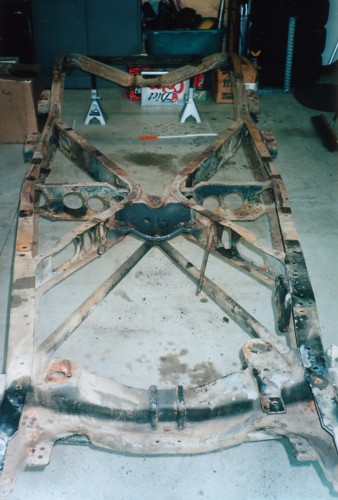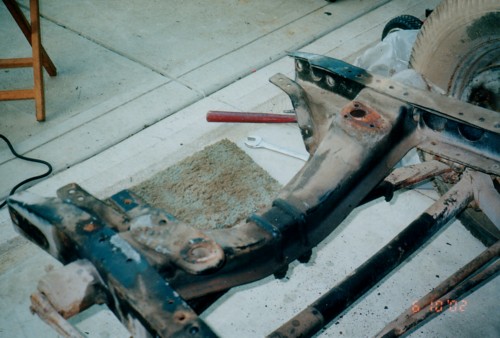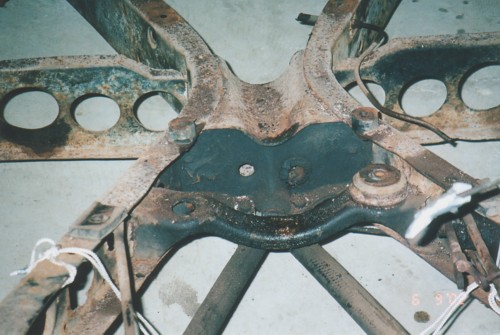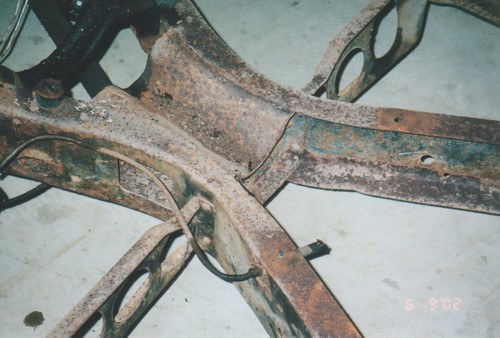My 1939 Ford Standard Coupe - The Tear Down

A note regarding the serial number on these Fords. This number was stamped into the top of the frame in at least two places. The first is near the front crossmember on the driver's side. The second is on the top of the driver's-side frame rail under the area of the door sill. My frame is somewhat cruddy with rust in the sill area and I could not see the number. The front location was clear once I removed the black paint hiding it. You can just make out the silver-looking area near the front of the frame where my serial number is.
I have taken the frame to a metal strip shop in Cincinnati that will dip the whole frame to chemically remove all rust, dirt, and grease. This is the same shop that dip cleaned my engine block.

You can see where I removed the black paint on the near frame rail to confirm my serial number.

There was plenty of surface rust, but things are pretty solid here.

At this point, I am 99% sure that I will be using the T5 five speed transmission and late model Ford 8" rear end in my car. The original three speed (which I sold with the engine) and Ford banjo rear end are not in my plans. The 60hp cars had 4.44:1 axle ratios and the car would be lucky to even get up to highway speeds. I learned with my 1940 Ford that higher gearing is nicer for highway cruising. It keeps the engine rpm's down which results in better gas mileage, less noise, and longer engine life.
I hated the idea of not staying stock, but I want to enjoy driving the car, including out of town if I want to. At least it will still be flathead powered!